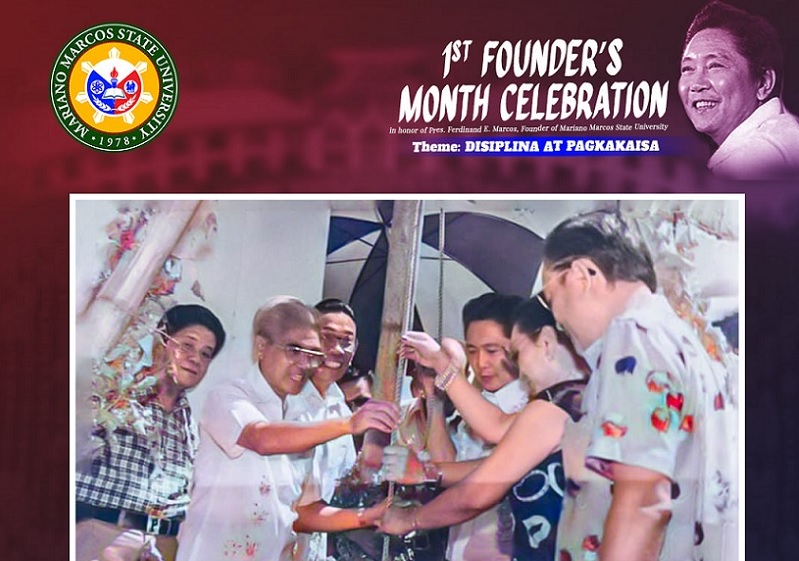During the long years of the Marcos regime, towns, schools and barangays were named after members of the dictator’s family. Marcos had no scruples about naming even a barangay after himself before he first set foot in Malacañang as president of the Republic.
Barangay Ferdinand Marcos was created in 1963 in the town named after his father, Mariano, in Ilocos Norte. Four other barangays were named after family members ( take note: while they were still very much alive and breathing): Marcos’ brother Pacifico, sister Elizabeth Keon, another sister Fortuna Barba, and wife Imelda.
Such brazen boldness is unprecedented among Philippine presidents.
And as can be expected, the former first lady was not to be outdone.
Two towns in the Philippines are named after Imelda Romualdez’s non-entity of a mother. Marcos signed Presidential Decree 1196 on September 13, 1977 to create a new town in Bulacan in honor of his mother in-law and named it Doña Remedios Trinidad, who was from Baliuag.
Five years later, a new town was carved in a place that had no connection whatsoever to the Marcos and Romualdez families in Agusan del Norte in northern Mindanao. It was named Remedios Trinidad Romualdez, an elongated name that people have learned to shortcut to RTR, forgetting Imelda’s mother in the process. Imagine the good graces the Batasang Pambansa assemblymen who authored Batas Pambansa 236 placed themselves in with the conjugal dictators.
The Marcos-naming spree was superfluous. For example, there are two state universities named after the dictator’s father: the Don Mariano Marcos Memorial State University in La Union and the Mariano Marcos State University (MMSU) in Batac, Ilocos Norte.
And now comes the bill to rename MMSU from one Marcos to another Marcos in keeping with the family’s tradition of serving its own interests. House Bill No. 2407 changing the institution’s name to the Ferdinand E. Marcos State University was authored by Angelo Marcos Barba, son of Fortuna and nephew to the deposed strongman.
Naturally, the congressmen who sit as members in the Committee on Higher and Technical Education all approved the proposed measure — except for Kabataan party list representative Raoul Manuel (kudos!). It is another sipsip act. After all, this is a good opportunity to be in the good graces of the ruling family.
Who voted for approval of this proposed law? Mark Go (chairman, Baguio City lone district), Jose Aquino II (Agusan del Norte, 1st district), Cha Hernandez (Calamba lone district), Mika Suansing (Nueva Ecija, 1st district), Zia Alonto Adiong (Lanao del Sur, 1st district), Jay Khonghun (Zambales, 1st district), and Tata Tudela (Zamboanga Sibugay, 2nd district).
Zia, how could you?
We are only two months into the presidency of the late dictator’s only son and namesake, but already the Marcos-naming tradition has been resurrected. Who expects Marcos Jr. to veto his cousin’s bill?
Imee Marcos is correct: “What is important now is we lift our name, and for our father’s legacy to be revisited.” That is all that matters – to the family.
If they read history, the congressmen can learn from the various name morphologies that the University of Science and Technology in Southern Philippines (USTP) has undergone. In 1978, Marcos converted the Mindanao School of Arts and Trades in Cagayan de Oro into the Don Mariano Marcos Memorial Polytechnic State College by way of Presidential Decree 1431, which he signed into law. Imagine the tongue twister of a very long acronym – DMMMPSC!
The history of this school, established in 1927 as the Misamis Oriental Trade School, had neither memorial nor cultural connection to the Japanese collaborator Mariano Marcos who was executed by Filipino guerillas for treachery against the Philippines in World War II.
In 1991, the new DMMMPSC administrators, overcome by prudence because the era of the Marcos tyranny was over and conscious of the judgment of history, erased Don Mariano Marcos from its institutional name and renamed it the Mindanao Polytechnic State College. It later became the Mindanao University of Science and Technology and the present-day USTP. If it were named the Don Mariano Marcos Memorial University of Science and Technology of Southern Philippines, the initials would be DMMMUSTSP.
These Marcos name changes are not to be trivialized. They do not come as free lunch. A new name entails expenses – new official stationeries, new seal, new communications, new documents, new liveries, etc. It is nothing but a spending spree.
And then the bare truth: renaming an institution after another Marcos is a superfluity. And an immorality.
